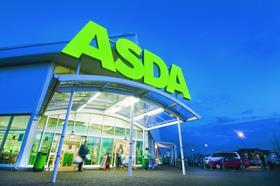
Asda’s return to sales growth has continued for the second quarter running, albeit at a slower rate than before.
The supermarket, owned by US retail giant Walmart, saw its like-for-like sales rise 1.1 per cent in the third quarter of the year – down from 1.8 per cent last quarter.
Prior to this, the supermarket had suffered three years of decline as it struggled to cope with the rise of Aldi and Lidl.
Of the big four supermarkets, Asda and Morrisons continue to be most affected by the German discounters’ rapid sales growth.
Although a profit figure was not provided by Asda, Walmart said the supermarket’s gross profit rate had declined, primarily due to commodity price volatility and ongoing price investments.
Asda chief executive Sean Clarke said: “The market environment will continue to be challenging into next year but we’re well placed with clear plans and a renewed level of confidence.”
He added: “It's great to see that we have now delivered our second consecutive quarter of positive like-for-like growth, and the fifth consecutive quarter of continued sales improvement.”
Despite the retailer’s improvement in sales, the number of trips to its stores fell by 1.4 per cent in the third quarter compared to the same period last year.
Fortunately basket sizes have expanded, helping to offset this. And Walmart president Doug McMillon put it down this down to “improvements in store experience and price investments”.
Just last month (October) the chain announced that chief executive Sean Clarke would step down in January after just a year and a half at the helm. He will be replaced by his deputy Roger Burnley.
The latest results come after Kantar revealed that supermarket price rises had driven grocery market inflation to its highest level for four years.
Despite low volume sales increases, higher value sales indicate that cost rises are starting to be passed on to shoppers due to the devaluation of the pound.



